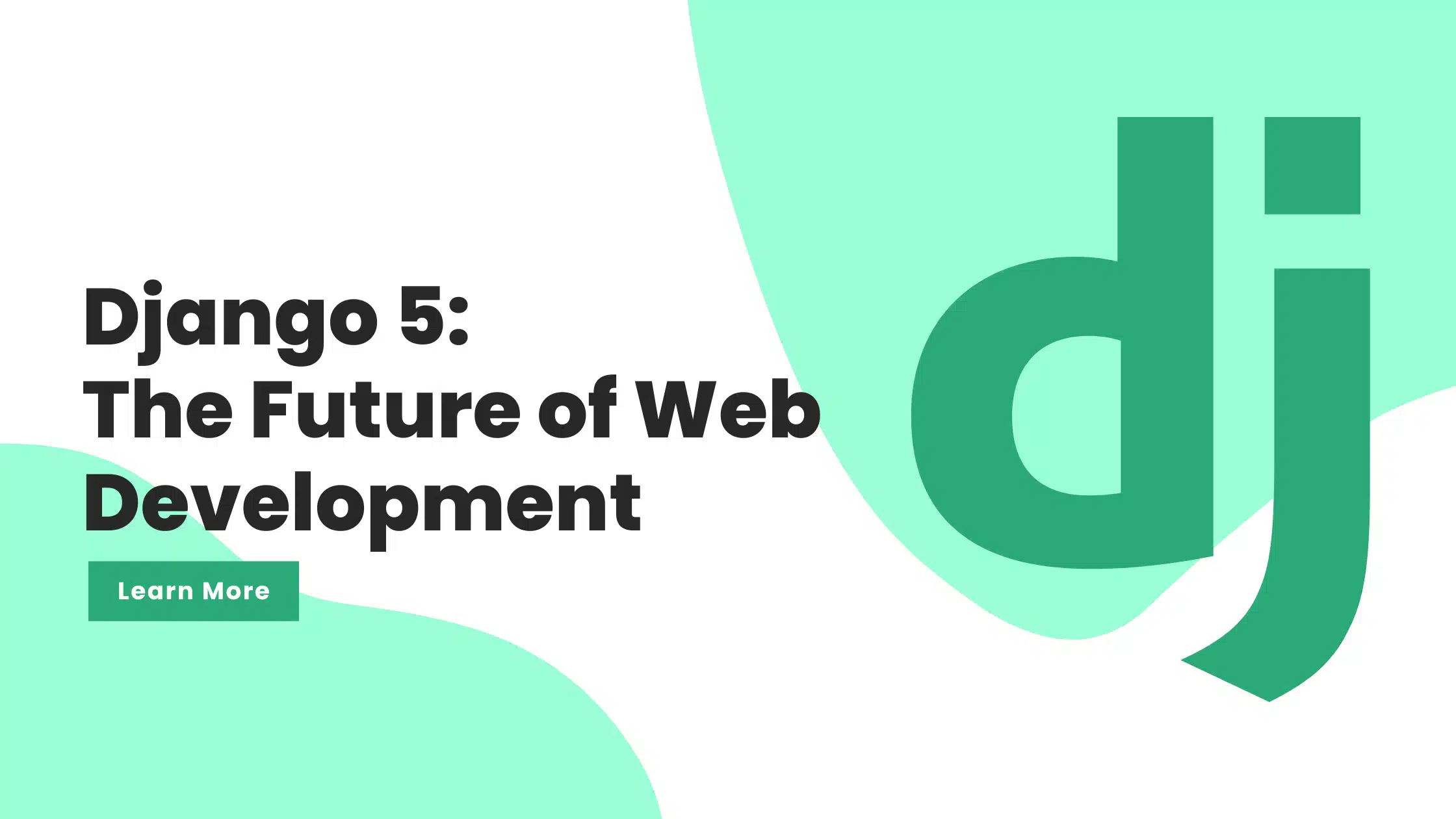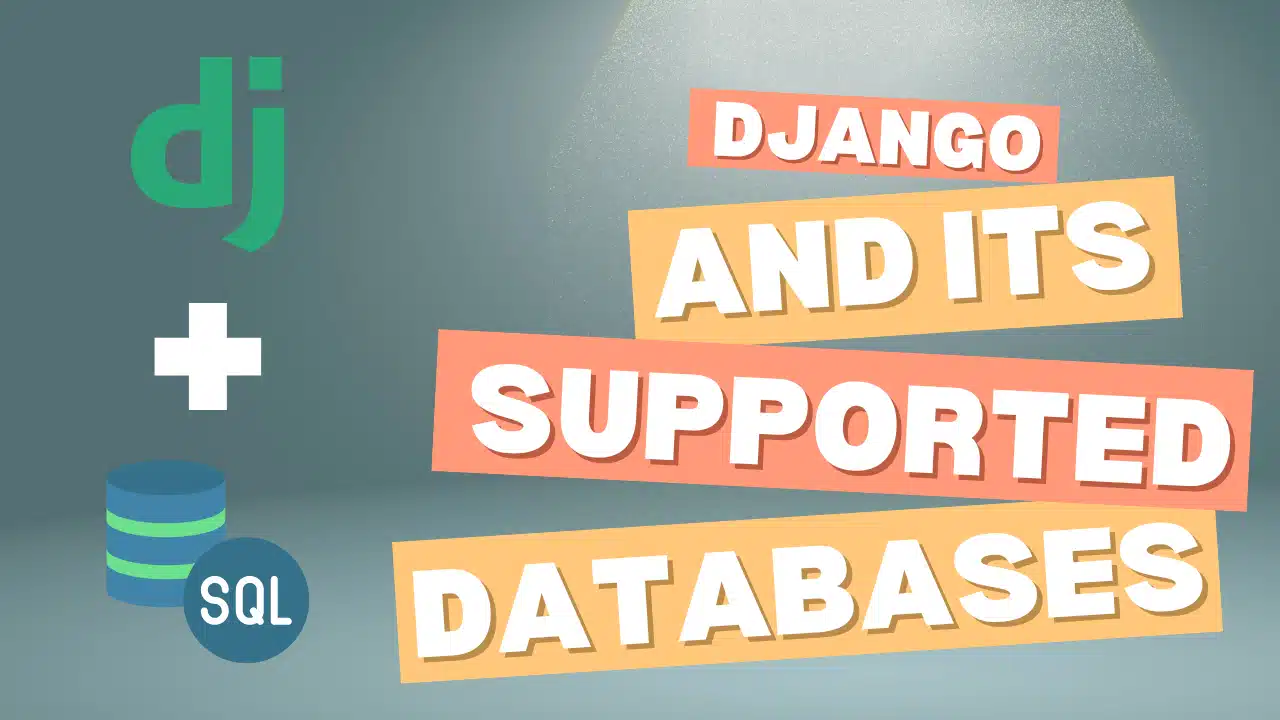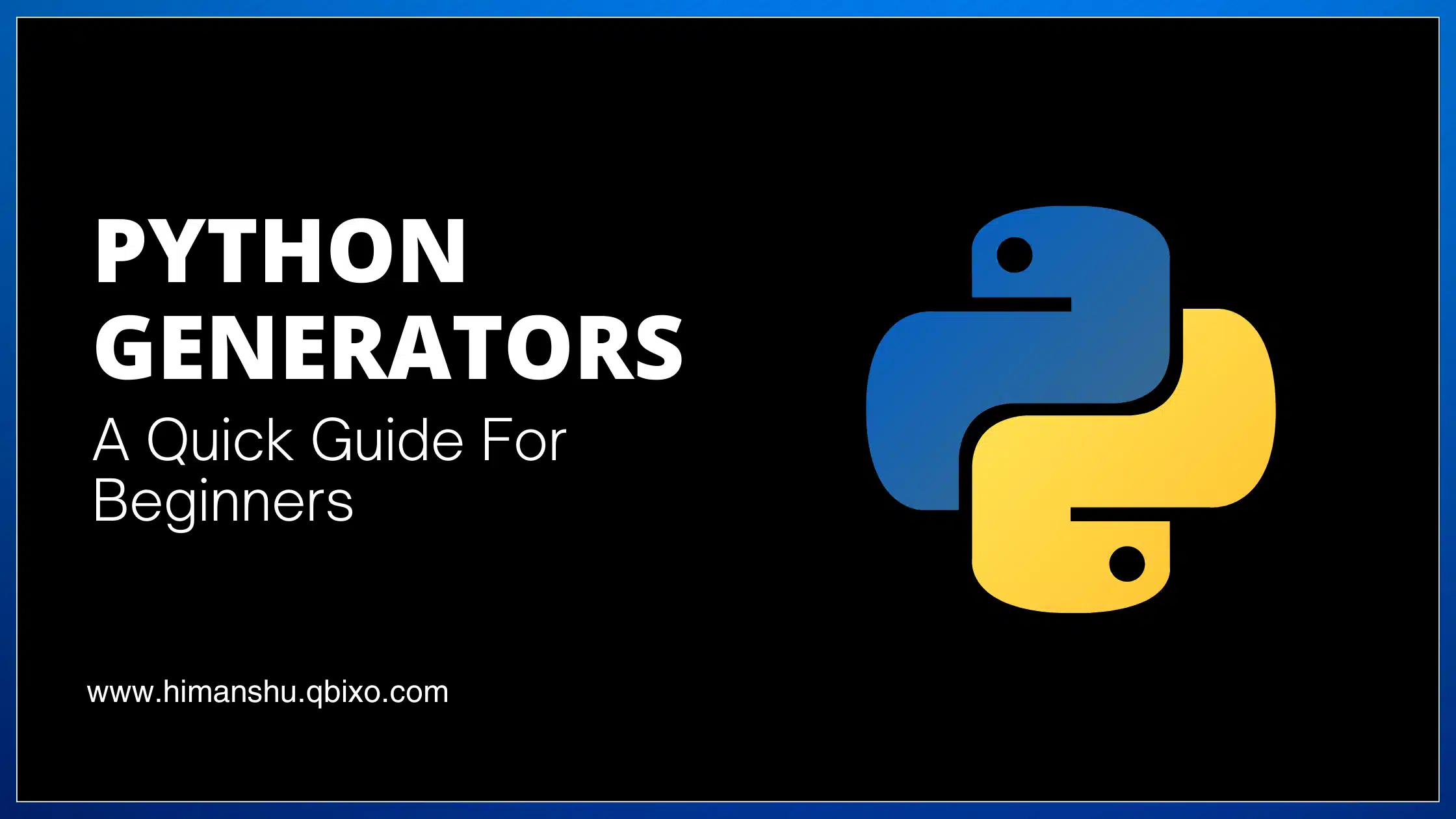Django 5: The Future of Web Development

Introduction
Django has long been a favorite among web developers for its simplicity, robustness, and versatility. As a high-level Python web framework, it encourages rapid development and clean, pragmatic design. With the release of Django 5, developers can expect a slew of new features and improvements that push the boundaries of what's possible in web development.
What's New in Django 5?
Key Features and Improvements
Django 5 brings several key features and improvements that enhance the overall development experience. These include a revamped admin interface, enhanced ORM capabilities, and better support for asynchronous programming. The framework has also seen significant improvements in security and performance, making it more robust and efficient than ever before.
Enhanced Performance
Performance has always been a priority for Django, and version 5 is no exception. With optimizations at both the database and application levels, Django 5 ensures faster query execution and improved response times. The introduction of asynchronous views and middleware further enhances the framework's ability to handle high-concurrency scenarios.
Security Enhancements
Security is a critical aspect of web development, and Django 5 takes this seriously. The new version includes enhanced protection against common vulnerabilities like Cross-Site Request Forgery (CSRF) and Cross-Site Scripting (XSS). Additionally, Django 5 introduces more secure default settings and better support for modern authentication methods.
Django 5 Installation
System Requirements
Before installing Django 5, ensure your system meets the necessary requirements. You'll need Python 3.8 or higher and pip, the Python package installer.
Step-by-Step Installation Guide
- Install Python: Download and install the latest version of Python from the official website.
Install Django: Open your terminal or command prompt and run the following command:
pip install django==5.0Verify Installation: Check the installation by running:
django-admin --version
Getting Started with Django 5
Creating a New Project
To create a new Django project, navigate to your desired directory and run:
django-admin startproject myprojectProject Structure Overview
Your new project will have the following structure:
myproject/
manage.py
myproject/
__init__.py
settings.py
urls.py
wsgi.pyRunning the Development Server
Navigate to the project directory and start the development server:
python manage.py runserverVisit http://127.0.0.1:8000/ in your browser to see your new project in action.
Django 5 for Backend Development
Improved ORM (Object-Relational Mapping)
Django's ORM has always been a strong point, and Django 5 enhances it further. The ORM now supports more complex queries and offers better performance optimizations. This makes it easier to interact with the database and perform operations efficiently.
Asynchronous Support
With Django 5, asynchronous support is more robust. Developers can now write asynchronous views, middleware, and signals, allowing for more scalable applications. This is particularly useful for handling I/O-bound operations like API calls and database queries.
Advanced Query Capabilities
Django 5 introduces advanced query capabilities that make it easier to perform complex database operations. This includes support for window functions, common table expressions (CTEs), and more efficient query chaining.
Django 5 for Frontend Development
Template Engine Enhancements
The Django template engine has received several enhancements, making it more powerful and flexible. This includes better support for template inheritance, improved debugging capabilities, and enhanced performance.
Improved Static File Handling
Managing static files is now more efficient with Django 5. The new static files handling system offers better caching strategies and more flexible configuration options, ensuring faster load times for your web applications.
Integration with Modern JavaScript Frameworks
Django 5 makes it easier to integrate with modern JavaScript frameworks like React, Vue, and Angular. With improved support for Webpack and other build tools, developers can seamlessly combine Django's backend capabilities with powerful front-end technologies.
Django 5 and REST APIs
Built-in Support for REST Framework
Django 5 continues to offer strong support for building RESTful APIs. The Django REST framework (DRF) is fully compatible, providing tools to create robust and scalable APIs quickly.
Creating and Managing APIs
Creating and managing APIs is straightforward with Django 5. The built-in tools and libraries make it easy to define endpoints, handle serialization, and manage authentication and permissions.
API Versioning and Documentation
Django 5 includes better support for API versioning, ensuring backward compatibility and smooth transitions between different versions of your API. Additionally, tools like Swagger and DRF-yasg make it easy to generate comprehensive API documentation.
Security Features in Django 5
Built-in Security Middleware
Django 5 includes built-in security middleware that provides protection against common web vulnerabilities. This middleware can be easily configured to enforce security best practices across your application.
Enhanced CSRF Protection
Cross-Site Request Forgery (CSRF) protection is stronger in Django 5. The new version includes more secure default settings and better handling of CSRF tokens, making it harder for attackers to exploit this vulnerability.
Secure Authentication Mechanisms
Django 5 supports a range of secure authentication mechanisms, including multi-factor authentication (MFA) and OAuth 2.0. This ensures that your application can implement robust and secure authentication strategies.
Performance Improvements in Django 5
Database Optimization
Database optimization is a key focus in Django 5. The new version includes several improvements to query execution and indexing, resulting in faster database operations and reduced load times.
Caching Strategies
Effective caching strategies are crucial for performance, and Django 5 offers better tools for caching both at the application and database levels. This includes support for advanced caching mechanisms like Redis and Memcached.
Asynchronous Processing
Asynchronous processing is now more efficient with Django 5. The framework's improved support for asynchronous tasks allows developers to build more responsive and scalable applications, particularly for handling I/O-bound operations.
Testing and Debugging in Django 5
Enhanced Testing Framework
Django 5 includes an enhanced testing framework that makes it easier to write and run tests. This includes better support for test discovery, more powerful assertions, and improved performance.
Debugging Tools and Techniques
Debugging in Django 5 is more efficient with enhanced tools and techniques. The new version includes better error reporting, more informative tracebacks, and improved integration with debugging tools like the Django Debug Toolbar.
Automated Testing Strategies
Automated testing is crucial for maintaining high code quality, and Django 5 makes it easier to implement. With tools like pytest-django and coverage.py, developers can automate their testing processes and ensure comprehensive test coverage.
Deployment of Django 5 Applications
Deployment Best Practices
Deploying Django 5 applications follows best practices to ensure security, performance, and scalability. This includes configuring settings for production, using environment variables, and setting up automated deployment pipelines.
Popular Hosting Options
Several popular hosting options are available for Django 5 applications, including Heroku, AWS, DigitalOcean, and PythonAnywhere. Each platform offers unique features and benefits, making it easy to find the right fit for your needs.
Continuous Integration and Deployment
Continuous integration and deployment (CI/CD) are essential for modern development workflows. Django 5 supports popular CI/CD tools like Jenkins, GitHub Actions, and GitLab CI, making it easy to automate your build and deployment processes.
Django 5 Community and Ecosystem
Community Support and Resources
The Django community is known for its supportive and inclusive environment. With Django 5, you can access a wealth of resources, including official documentation, community forums, and tutorials.
Popular Django Packages and Extensions
Several popular packages and extensions are compatible with Django 5, enhancing its functionality. These include the Django REST framework, Django Allauth, and Django Celery, among others.
Contributing to Django
Contributing to Django is a great way to give back to the community and improve the framework. Django 5 makes it easier to get involved, with clear guidelines and a welcoming community of contributors.
Comparative Analysis with Previous Versions
Django 5 vs Django 4
Django 5 brings several improvements over Django 4, including enhanced performance, better security, and more robust support for asynchronous programming. These enhancements make Django 5 a compelling upgrade for both new and existing projects.
Benefits of Upgrading
Upgrading to Django 5 offers numerous benefits, including access to the latest features, improved performance, and enhanced security. The new version also ensures compatibility with modern development practices and tools.
Future Prospects of Django
Upcoming Features and Roadmap
The Django development team has a clear roadmap for the future, with several exciting features in the pipeline. These include further enhancements to asynchronous support, improved developer tools, and more robust security features.
Long-term Support Plans
Django 5 comes with long-term support (LTS), ensuring that it will receive security updates and bug fixes for an extended period. This makes it a stable and reliable choice for your web development projects.
Conclusion
Django 5 represents a significant step forward in the evolution of this beloved web framework. With its enhanced performance, improved security, and robust support for modern development practices, Django 5 is well-equipped to meet the needs of developers in 2024 and beyond. Whether you're building a simple website or a complex web application, Django 5 offers the tools and capabilities you need to succeed.
FAQs
Que 1. What are the main advantages of Django 5?
Ans. Django 5 offers enhanced performance, improved security, robust asynchronous support, and a more powerful ORM, making it a versatile and efficient framework for web development.
Que 2. Is Django 5 backward compatible?
Ans. Django 5 aims to maintain backward compatibility with previous versions, though some deprecated features may require updates. It's recommended that the release notes be reviewed for specific changes.
Que 3. How does Django 5 enhance security?
Ans. Django 5 includes stronger CSRF protection, secure authentication mechanisms, and built-in security middleware to protect against common web vulnerabilities.
Que 4. What are the performance improvements in Django 5?
Ans. Django 5 features optimized database operations, better caching strategies, and efficient asynchronous processing, all contributing to faster and more scalable applications.
Que 5. How can I get involved in the Django community?
Ans. You can get involved in the Django community by participating in forums, contributing to the codebase, attending Django events, and using the vast array of online community resources.
About Author
Latest Blogs

Mastering C#: Your Ultimate Guide to Learning C# Programming
Introduction to C#C# (pronounced "C sharp") is a versatile and powerful programming language developed by Microsoft. Launched in the early 2000s, it is primarily used for building Windows applications, web services, and games. With its clean syntax and object-oriented principles, C# has become one of the most popular programming languages worldwide.Why Learn C#?Versatility: C# is used in various domains, from desktop applications to cloud-based services.Strong Community: With a robust community …

A Complete Guide to Hacktoberfest 2024: How to Register, Contribute, and Make the Most of It
Hacktoberfest is back for 2024! This annual event encourages developers worldwide to contribute to open-source projects. Whether you're a seasoned open-source contributor or a newcomer, this guide will walk you through the process of getting started, making contributions, and maximizing your participation in Hacktoberfest 2024. What is Hacktoberfest?Hacktoberfest is an event held every October to celebrate and promote open-source software. DigitalOcean organizes it in partnership with other tech companies and open-source …

Django and Its Supported Databases: A Comprehensive Guide
Django, a powerful web framework written in Python, offers seamless integration with various databases. Choosing the right database depends on your project needs. This guide will explore all available databases compatible with Django, how to connect them, incompatible databases, and frequently asked interview questions related to Django database integration.Supported Databases in DjangoPostgreSQLMySQLMariaDBSQLiteOraclePostgreSQLPostgreSQL is a popular open-source relational database that is fully supported by Django. It's known for advanced features like …

Python Generators: A Comprehensive Guide with Examples, Use Cases, and Interview Questions
IntroductionIn Python, generators provide a powerful tool for managing large datasets and enhancing performance through lazy evaluation. If you’re aiming to optimize memory usage or handle streams of data efficiently, understanding Python generators is crucial. This blog will cover what Python generators are, how they work, their advantages, scenarios where they shine, and some common interview questions. Whether you're a seasoned developer or new to Python, this guide will help …
Social Media
Tags
#Python
#Django
#Django Rest Framework
#Django5
